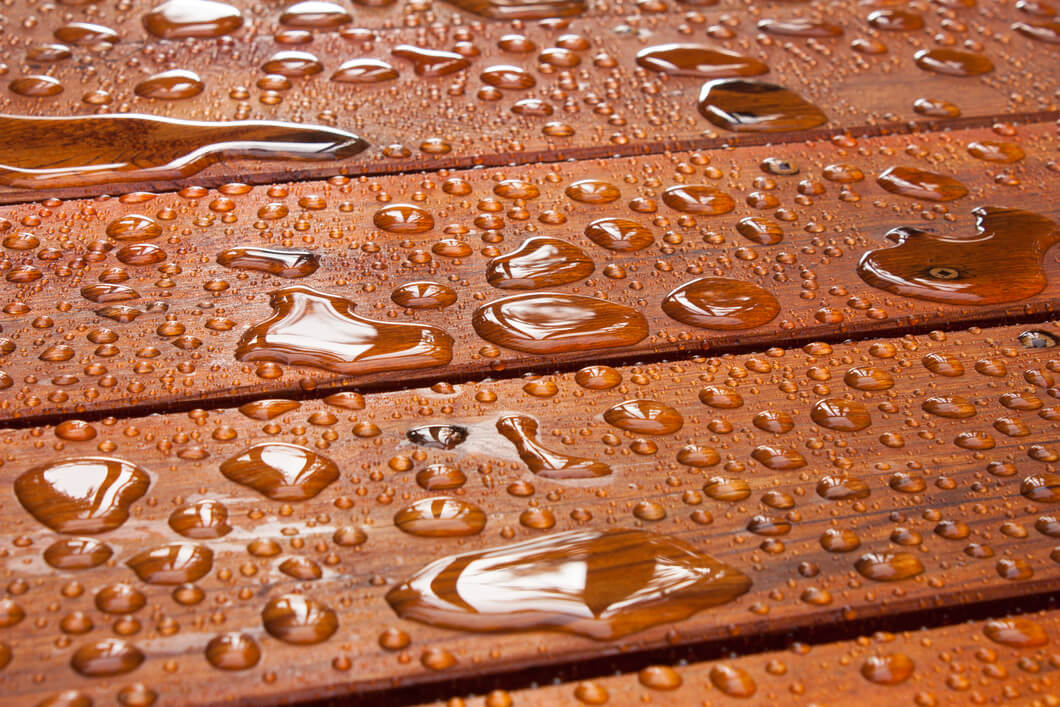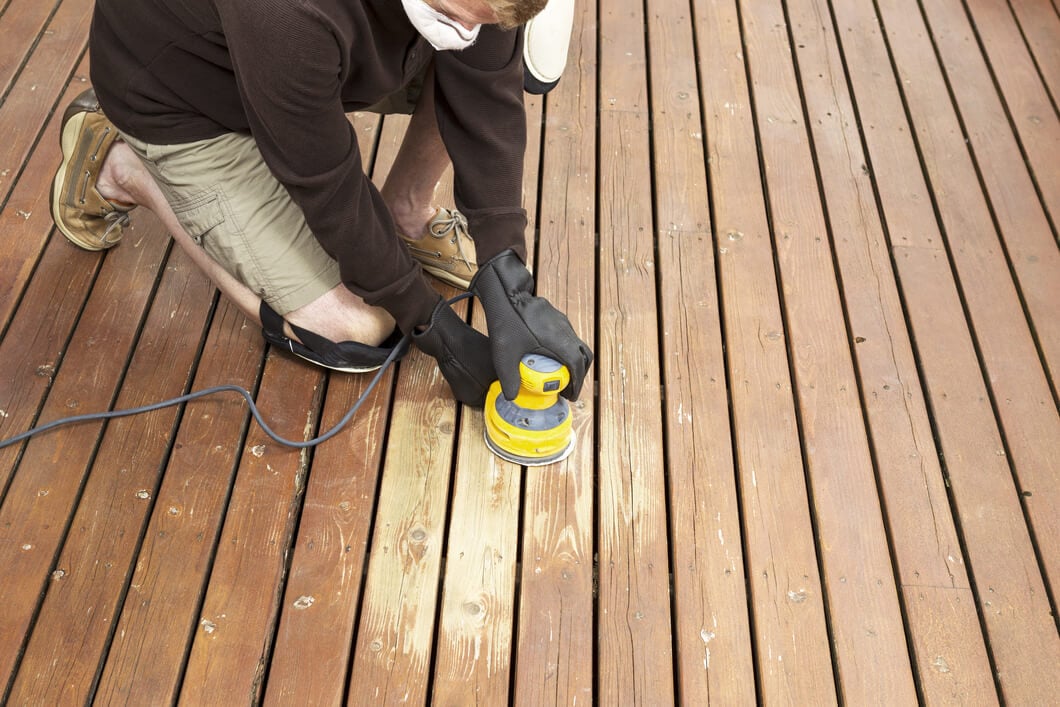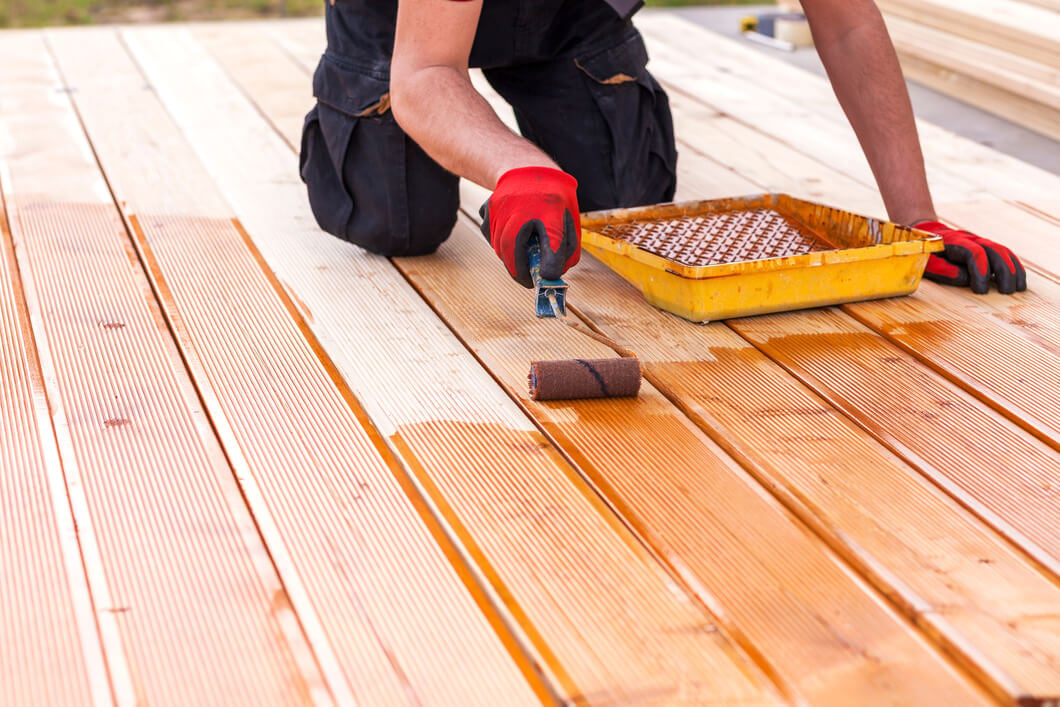
Article Summary:
If you've never sealed a deck before then we recommend following these simple steps below to get it right first time around. Sealing Timber Deck Boards can keep them looking as good as new with their original woodgrain surface, and provide further protection from the elements, ultimately extending the life of your deck.
Find out what our top five deck sealers are and how the best deck sealers can improve your deck. We also look at the differences between a stainer and sealer, so by the end of reading this article, you'll have a much clearer idea of what you need for sealing a deck and which are the best deck sealers out there.
Best Deck Sealers for Clear, Maximum Protection
Not sure which deck sealer to buy? Here are our top five recommend deck sealers for making your timber decking look great and for providing long lasting protection against the elements. When it comes to picking the deck sealer, there are different versions that you'll come across, including oil based, cream based and water based.
Oil based sealers will provide an increased level of protection for the surface of the wood deck and have better water resistant properties when compared to water based sealers to protect the wood from heavy rainfall. Applying this type of sealer can be more difficult compared to water based sealers as well, and can contain chemicals that aren't environmentally friendly. The other benefit is that these sealers last longer than water based ones.
Water based sealers are much more eco-friendly and safer to apply. Using a water based sealer is less messy and quicker drying than an oil based sealer, however, is less durable than oil based ones and may need reapplying more often.

1. RONSEAL ULTIMATE PROTECTION DECKING OIL, 5 LITRES
An oil based sealer designed to enhance the protection levels of your deck, specifically for a natural oak deck. Ronseal Ultimate Protection Oil soaks into the wood for enhanced durability and improved weather and foot traffic protection. Unlike standard sealers, UV protection is a major benefit of this type.
Shop for Ronseal Ultimate Protection Decking Oil on Amazon.
2. ROXIL WOOD PROTECTION CREAM, 3 LITRES
As opposed to oil based sealers, Roxil Wood Protection Cream works after just one coat, and according to Roxil the cream will provide weather proofing for over 10 years. Apply to hardwoods or softwoods to help reduce mold, warping and algae from occurring on the deck surface.
Shop for Roxil Wood Protection Cream on Amazon.
3. EVERBUILD WOOD PRESERVER, 5 LITRES
This wood preserver boasts a fast drying time and aims to give lasting protection from wet rot, fungi and decay for various wood surfaces. Everbuild Wood Preserver is solvent-free and non-flammable, making it versatile and safe for both indoors or outdoors use. It can even be applied to damp wood.
Shop for Everbuild Wood Preserver on Amazon.
4. CUPRINOL WOOD PRESERVER, 5 LITRES
Cuprinol Wood Preserver is the best clear deck sealer out there, designed for application on pressure treated wood and for both exterior and interior types of wood. Apply this preserver before painting, staining or varnishing your deck to protect against decay, rot and mold.
Shop for Cuprinol Wood Preserver on Amazon.
5. BARRETTINE DECKING OIL, 5 LITRES
Barrettine Decking Oil is quite unique in that it offers additional anti-slip properties for the surface of your deck. Available in a clear finish, the product increases UV protection and reduces the water absorption rate for decks.
Shop for Barrettine Decking Oil on Amazon.
What to Think About when Deciding on a Deck Sealer
Choosing the best sealer for your deck comes with a number of features to consider. Depending on the type of wood you are looking to apply sealer onto, you'll want to apply the right sealer. Pressure treated wood will usually require decking sealer to protect it further from heavy rainfall. Over time, wood will expand and contract as the temperature varies through the year, and could splinter or crack wooden boards along the grain.
Price - Cream based sealers are generally more expensive than oil based sealers per gallon due to the fact that they require fewer coats each time and dry quicker. Water based sealers are again more expensive than other sealers.
Toughness - Some of the best deck sealers are often oil sealers, which are either clear or semi-transparent in appearance. The properties of those sealers, after a second coat, can help prevent water damage or moisture building up in the boards caused by heavy rain.
Eco-friendliness - It's no secret that water based sealers are the safest deck treatment type for the environment, containing fewer chemicals that could affect the surrounding. Check the formula of other sealers and apply it carefully to surfaces to reduce the risk of affecting the environment.
Ease of use - Easy to apply sealers are water based and cream based ones, due to their faster drying times within 24 hours. Water sealers are generally applied using a brush, although a sprayer can be used for quicker application. Oil sealers are usually applied with a paintbrush for each coating. It's important when deck treating to make sure the wood is fully dry for best quality results.
Resistance properties - Protecting boards from UV rays is important to prevent fading or cracking. Sealers come with a slight amount of protection, although this varies depending on the pigmentation of the sealer. Other sealers offer mold and mildew protection, with moisture prevention to enhance longevity.
Drying times - Deck sealer dry times vary, with water based sealers dry to the touch within just a few hours in a daytime warm temperature, allowing for a second coat to be applied for added protection for the exterior wood sruface. Oil sealers can take twice as long to dry, with cure times of 72 hours. One coating is usually not enough, so make sure you have a few days of sunshine when applying this type.
Do you Need to Seal Composite Decking?
Composite Decking is manufactured to be a low-maintenance product, made up of recycled hardwood fibres and recycled plastics with tints and dyes. The colour of the boards run the whole way through as opposed to being surface level. We don't recommend sealing a composite deck as the boards have been designed to withstand weathering and are manufactured with resistance to UV rays, insects and rot. When purchasing Composite Woodgrain Deck Boards, the woodgrain effect does not require sealant products to enhance it - as with all composite deck boards, occasional washing is all that's required.
To find out what happens when Composite Deck Boards are treated, read our blog post 'Can you paint or stain composite decking'.

What's the Difference Between Deck Sealer & Stain?
Sealer - A sealant is usually oil based that not only helps to show off and protect the natural grain of the wood but also helps to prevent water absorption. Sealing the deck reduces the chances of mildew, mold or rot damaging the boards. Deck sealers penetrate the wood and provide a protective layer against water absorption. Deck sealant provides very little protection against harmful ultraviolet rays because it is clear in appearance. This can lead to the natural oils in the wood drying up and potentially the wood deck can crack or split, if left untreated.
Stain - A deck stain will make sure the wood's surface is not only protected from water absorption but also from harmful UV rays due to the dark pigments within the stainer. Generally the darker the stainer the more it protects the wood due to the increased pigmentation. The other main difference between a stain and sealer is a deck stainer comes in a wide variety of colours to suit the wood.
How to Apply Deck Sealer to a Wood Deck
Sealing a deck can help to extend the lifespan of the deck area and ensure it effectively reduces the level of water absorption into the wood surface. There are quite a few points to consider first before jumping into the process.
STEP 1: CHECK THE WEATHER FORECAST
Before getting down with the brush, check the weather forecast as you'll need a good few days of rain-free weather. This will allow enough time for the deck sealer to dry. Avoid applying sealer in hot, direct sunlight as it may evaporate and won't fully soak into the wood deck. If it rains while it's drying, this could mean starting again, or potentially increasing the overall drying time.
STEP 2: CLEARING YOUR DECK BEFORE SEALING
The next thing to do before applying any deck sealer is to clear the surface of your deck by removing any furniture, plant pots, rubble or obstacles. This will prevent having to remove these while the deck is drying out, or while applying the sealant.
STEP 3: SAND YOUR DECK (IF REQUIRED)
Only sand your deck first if you need to, as this process can be time-consuming if conscious of the weather. This is usually only required for decks that have previously been treated or varnished, as sanding the surface can increase the absorption rate of the stainer. Be sure to sand in the direction of the wood grain for the best quality finish and best results.

STEP 4: CLEAN & RINSE DEBRIS OFF YOUR DECK
This is the most important step, as it's vital to properly clean and rinse your deck before applying the sealant. Make sure there is no mold or mildew, or dust from the sanding of the surface of the deck, to allow for maximum absorption. Only apply the deck sealer to dry wood unless the sealant manufacturer states otherwise. Refer to our 'How to clean your decking guide' before moving onto the next step.
STEP 5: CAREFULLY STIR YOUR SEALER
You want to carefully stir the sealer before applying it to the exterior of your deck to make sure the contents are well mixed. Avoid shaking the sealer as this can create pockets of air appearing inside.
STEP 6: SEAL YOUR DECK
Using a brush, pump sprayer or paint roller, apply a thin layer of sealant to the exterior wood surface, working the deck sealer thoroughly into the wood as you go. Keep an eye on any pools of water or cream forming, and smooth them out before they dry. Multiple thin coats work best to avoid pooling and to speed up the drying time. Make sure the sealer on your wooden deck is completely dry before using or walking on.

CONCLUSION:
Sealing a deck can help to extend the lifespan of the deck area and ensure it effectively reduces the level of water absorption into the wood surface. There are quite a few points to consider first before jumping into the process.
Choosing the best deck sealer for pressure treated wood is the first step to improving and increasing the life span of your deck. This will best prepare your wood deck if you choose to paint it or stain it afterwards. It might be a case of applying a layer of paint instead of sealing if your deck is very weathered or worn and you need to cover up or refresh the look.
Consider the type of wood that your sealer will be applied to and the weather conditions you're facing. This will determine how much time you have for the sealer to dry. Bear in mind that oil based deck sealers take longer to dry with usual drying times of up to 72 hours. Read the manufacturer's specifications before purchasing.
Whether you choose a wood sealer that's water or cream based, decide which benefits you require, whether you need a high level of UV protection, or added low-slip properties, for your deck.
If staining and treating your Deck regularly is not a process you enjoy, Cladco stock fantastic low maintenance alternatives to timber decking such as Composite and Millboard Decking. These products have a range of benefits, including low maintenance, no need to sand, stain, or treat your deck. Simple install and enjoy.

